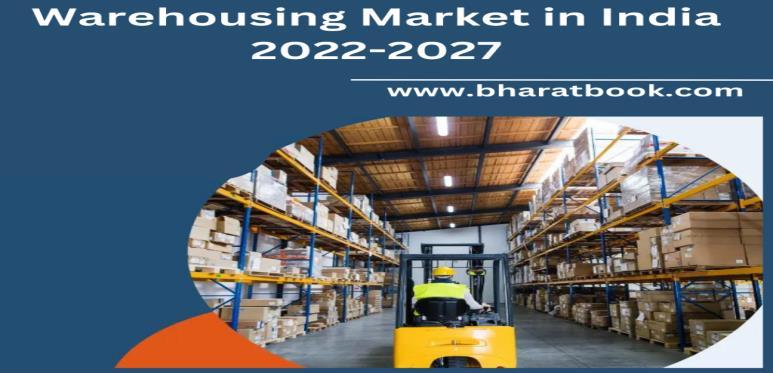Warehousing Market in India 2022-2027
Bharat Book Bureau Provides the Trending Market Research Report on“Warehousing Market in India 2022-2027”under Automotive Market Research Report Category. The report offers a collection of superior Market research, Market analysis, competitive intelligence and Market reports.

Executive Summary
Logistics and Warehousing Market play a crucial role to bridge the gap between customers and manufacturers. The ease and efficiency of a logistic chain have a huge impact on the time a product reaches the customer. Effective warehousing is crucial for companies so that they can maintain their inventory and supply the goods whenever demand rises. As the e-commerce industry started growing, warehouses became an integral part of the logistics chain.
Warehouses not only provide room for storing products but also play an important role in providing space for packaging, docking, and drawing out products so that the delivery time is reduced. Some of the major players in this sector are Container Corporation of India Ltd., Gati Ltd., Mahindra Logistics Ltd., and Central Warehousing Corporation.
The requirement for high-quality warehouse space, increase in automation, and ongoing demand driven by e-commerce and third-party logistics contributed to the robust expansion of investments in the logistics and industrial segments in 2021. Compared to USD 848 Mn received in 2020, the annual investment volume in 2021 jumped by 55% YoY to USD 1,313 Mn.
Market insights:
The Indian warehousing market was valued at INR 1,206.03 Bn in 2021. It is expected to reach INR 2,872.10 Bn by 2027, expanding at a CAGR of ~15.64% during the 2022-2027 period. Demand for warehouses has increased in India, and the strong deal pipeline points to a recordbreaking net absorption of 42.5 Mn square feet in 2022 compared to 39 Mn square in 2021. Around 60% of the modern warehousing capacity is found in six metropolitan citiesAhmedabad, Bangalore, Chennai, Mumbai, Delhi, and Pune.
Segment insights:
In 2021, the Third-Party Logistics (3PL) sector acquired the maximum warehousing space, followed by e-commerce. The 3PL, e-commerce, FMCD, FMCG, and retail sectors acquired 31%, 31%, 5%, 5%, 4% of warehousing space, respectively. The FMCD, FMCG, and retail
sectors outsource their space requirements to 3PL players. Therefore, their warehousing space requirement is less than that of 3PL sector.
COVID-19 impact analysis:
In the wake of the pandemic, the Government of India announced a nationwide lockdown in 2020 which led to a labor crisis in all major cities. Warehouses faced a workforce shortage and operations were hampered. On the other hand, the outbreak of COVID-19 prompted people to shop online and boosted the e-commerce market and warehousing space requirements. The organized food delivery has risen in view of the pandemic which has augmented cold chain warehousing space requirement. The demand of industrial and consumer goods has dropped, increasing the construction cost of warehouses.
Browse our full report with Table of Content : https://www.bharatbook.com/report/1377322/warehousing-market-in-india-twentytwo
Bharat Book is Your One-Stop-Shop with an exhaustive coverage of 4,00,000 reports and insights that includes latest Market Study,Market Trends & Analysis, Forecasts Customized Intelligence, Newsletters and Online Databases. Overall a comprehensive coverage of major industries with a further segmentation of 100+ subsectors.
Contact us at:
Bharat Book Bureau
Tel: +91 22 27810772 / 27810773
Email: poonam@bharatbook.com
Website: www.bharatbook.com
